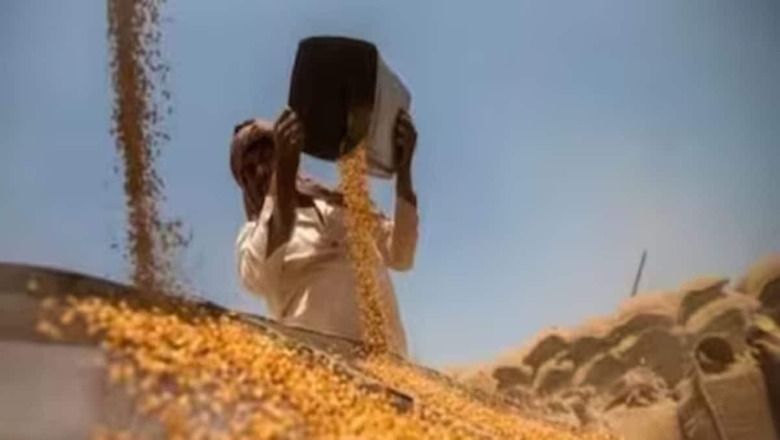
views
The government on June 13 said it is closely monitoring the market price of wheat and will take necessary measures if required, to prevent hoarding and ensure price stability. Stating that India has sufficient wheat stock well above the prescribed buffer stocking norms, the government said that currently, there is no proposal to alter the duty structure on imports of wheat.
In the past one week, wheat prices have shot up by 7 per cent.
“The Department of Food and Public Distribution under Ministry of Consumer Affairs, Food and Public Distribution is keeping close watch on the market price of Wheat. In addition, suitable interventions, as warranted shall be undertaken to ensure that there is no hoarding by unscrupulous elements and the price remains stable,” the Ministry of Consumer Affairs, Food and Public Distribution said in a statement on June 13.
For the Rabi Marketing Season (RMS) 2024, the Department has reported a wheat production of 112 million tonnes (MT). The Food Corporation of India (FCI) has procured about 26.6 MT of wheat by June 11, 2024, it said.
This procurement level ensures that after meeting the Public Distribution System (PDS) and other welfare schemes’ requirements, which amount to about 18.4 MT, there will still be sufficient wheat stock available for market interventions if necessary, the ministry added.
It said buffer stock, the norms of which vary quarterly, has been maintained.
“As on January 1, 2024, the wheat stock was 163.53 LMT (lakh metric tonnes) against prescribed buffer norm of 138 LMT,” according to the statement.
The wheat stock has at no point of time dipped below the quarterly buffer stock norms, it added.
“At present, there is no proposal to alter the duty structure on imports of wheat,” the ministry added.
Meanwhile, onion prices have also seen a significant increase. At the benchmark Lasalgaon wholesale market in Maharashtra’s Nashik district, prices have surged by more than 30 per cent in the last fortnight, according to an Economic Times report. This rise is not unusual, as onion prices typically increase from June to September/October, depending on stock positions and the quantum of the monsoon. This seasonal trend underscores the complexities in managing agricultural commodities and highlights the importance of continuous monitoring and timely interventions to mitigate sudden price hikes.
The food inflation has been hovering at higher levels due to various reasons including the drought last year.
According to the latest official data released on Wednesday, India’s overall CPI inflation eased to 4.75 per cent as against 4.83 per cent in the previous month of April, while the food inflation remained sticky at 8.69 per cent as compared with 8.70 per cent in April.
In its latest monetary policy review, the Reserve Bank of India’s (RBI) monetary policy committee maintained its FY25 inflation projection 4.5 per cent but added that food prices could continue to be sticky.
While presenting the policy, RBI Governor Shaktikanta Das last week said the Reserve Bank remains vigil on any upside risk inflation, especially food inflation.
The RBI has projected the CPI inflation for 2024-25 at 4.5 per cent, with Q1 at 4.9 per cent, Q2 at 3.8 per cent, Q3 at 4.6 per cent, and Q4 at 4.5 per cent.
The government has tasked the Reserve Bank to ensure the CPI inflation remains at 4 per cent with a margin of 2 per cent on either side.
















Comments
0 comment